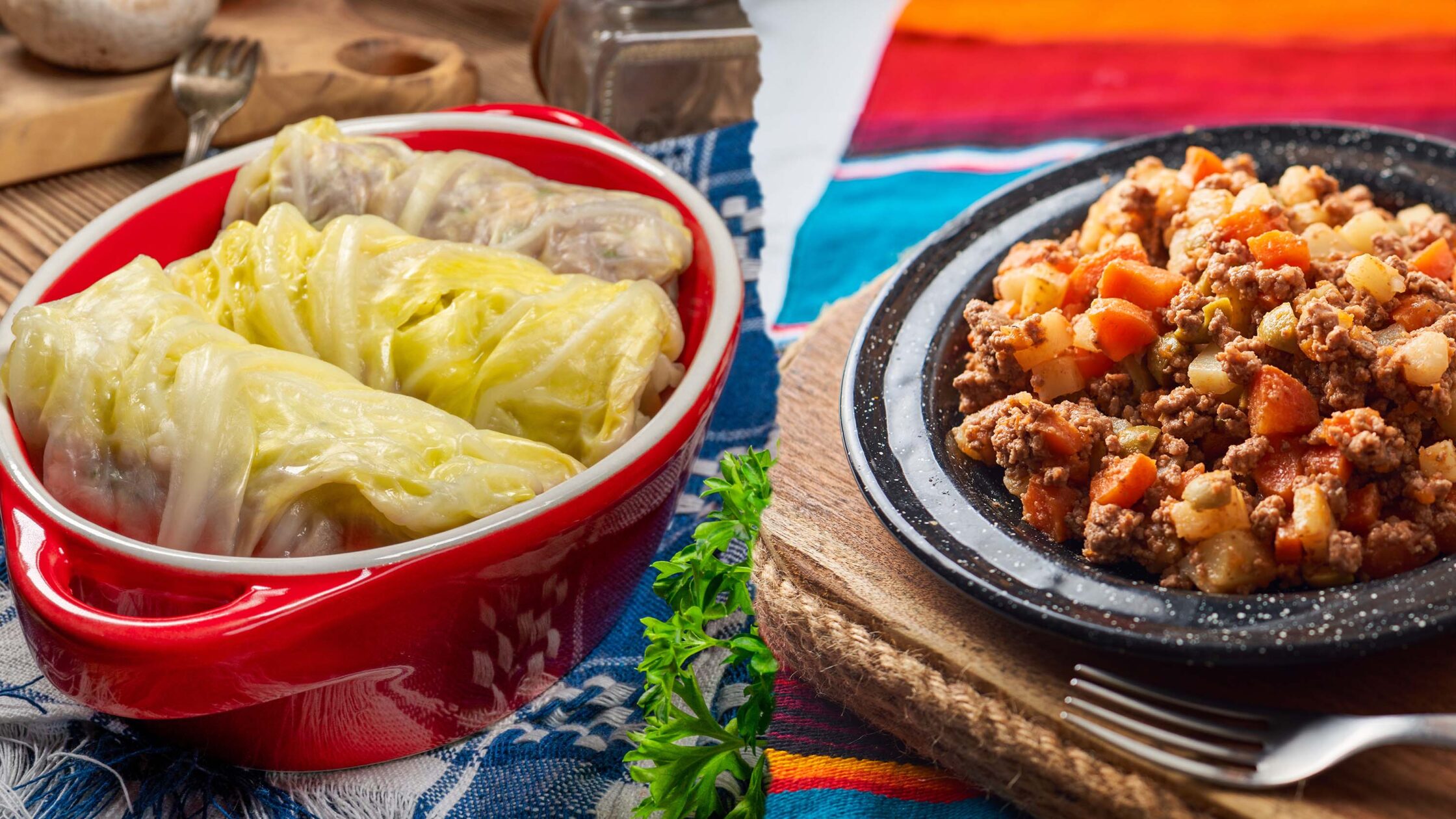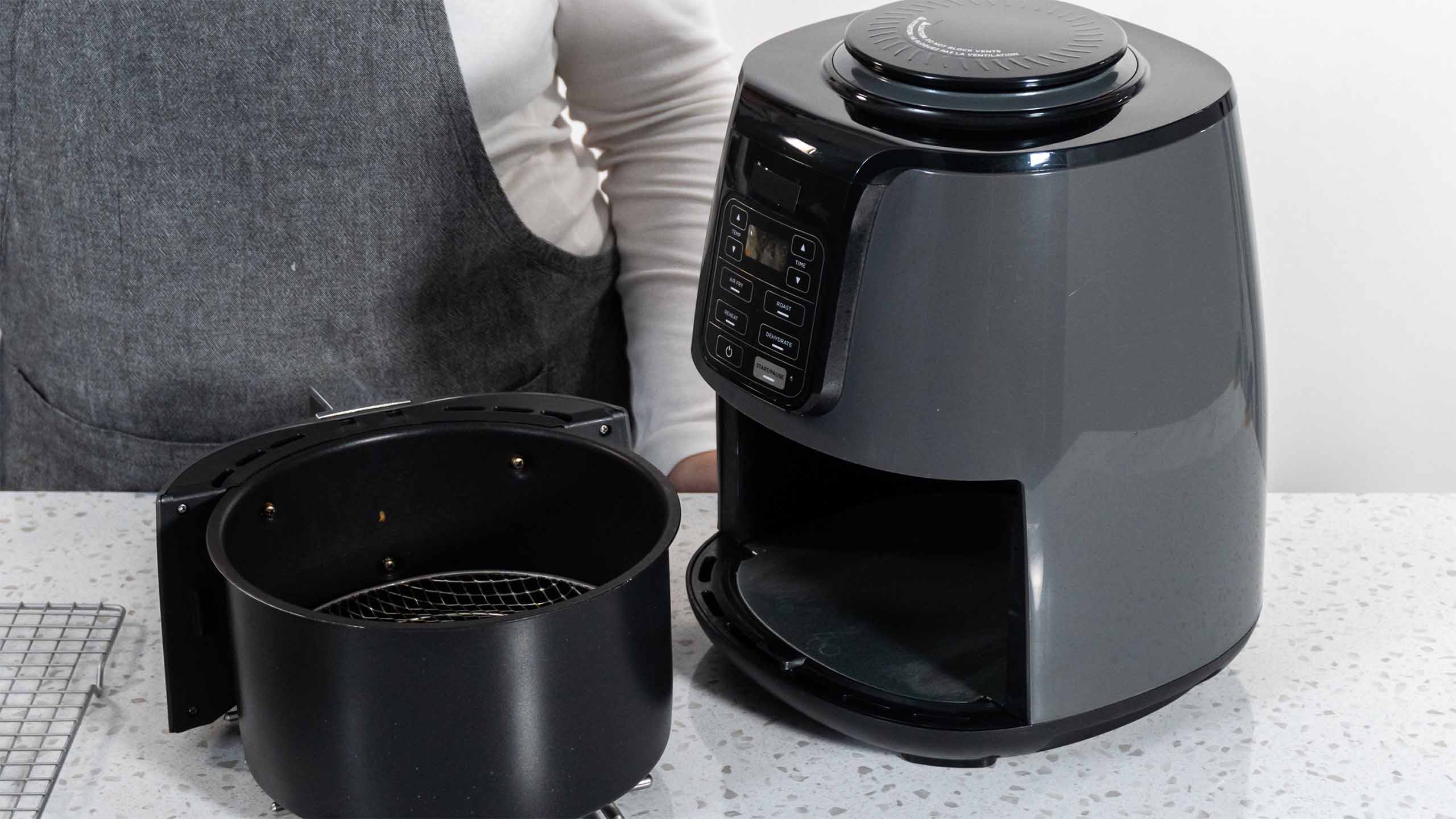The Joys of Having a Melting Pot: Family-Friendly Fusion Dishes
While most would prefer traditional dishes, there are some fusion dishes that are absolutely family-friendly.
Fusion cuisine — by taking the techniques of two popular cuisines, restaurants and even we, when we cook at home, reinterpret the dishes. Although we’re sure some of our grandparents who grew up with more traditional dishes may be skeptical, there are some family dishes, while traditional, are actually fusion in origin. Here are some of the more family-friendly fusion dishes that most believe are traditional.

1. Kiampong Rice (Chinese-Filipino)
Although usually served in Chinese restaurants like Sincerity Café, Kiampong is actually a fusion Filipino-Chinese dish. Derived from the word “kiam” and “pung” which is Hokkien for “viand” and “rice,” the Filipinos adapted this dish from the Chinese traders who came before the Spaniards. It may look like Machang (the sticky rice wrapped up in leaves) but, this one has some Filipino elements like the meat being cooked similarly to adobo.
The best part is, this family-friendly fusion dish doesn’t leave a mess!
Ingredients
- 2 cups of Jasmine Rice
- 1/2 cup of Gluttinous Rice
- 5 cups of water
- 100 grams of dried shitake mushrooms, sliced
- 3 Chinese sausages, sliced
- 1 tsp of ginger, minced
- 1/2 head of garlic, minced
- 1 medium red onion, minced
- 150 grams of menudo cut pork
- Marinade in the following: 1/3 cup soy sauce, 1/8 cup vinegar, 2 tbsp sesame oil
- 50 grams of hibe (or dried shrimp)
- spring onion (sliced, for garnish)
- peanuts (toasted)
- 1/3 cup oyster sauce
Steps
- Wash the rice.
- Sauté the pork and chinese sausage in garlic and ginger.
- Place everything in the rice cooker, including the sliced dried shitake mushrooms and hibi.
- Don’t forget to pour the pork’s marinade with the 5 cups of water. Add oyster sauce to prevent the taste from getting diluted.
- Let the rice cooker do the work and serve!
- Add the spring onion garnish and toasted peanuts for garnish.
Tips
- Most recipes would say to soak the dried shitake mushrooms first but, we prefer cooking it in the rice cooker so the mushroom flavor actually melds with the rice.
- As much as possible, use the fat from the pork and sausage to sauté. That way, the rice won’t become so oily and we won’t break our rice cooker. Some rice cookers don’t handle oil well.
- Feel free to swap the pork into chicken for those who are trying to lessen their red meat intake. Except, make sure to melt the fat from the chicken skin to sauté the chicken.
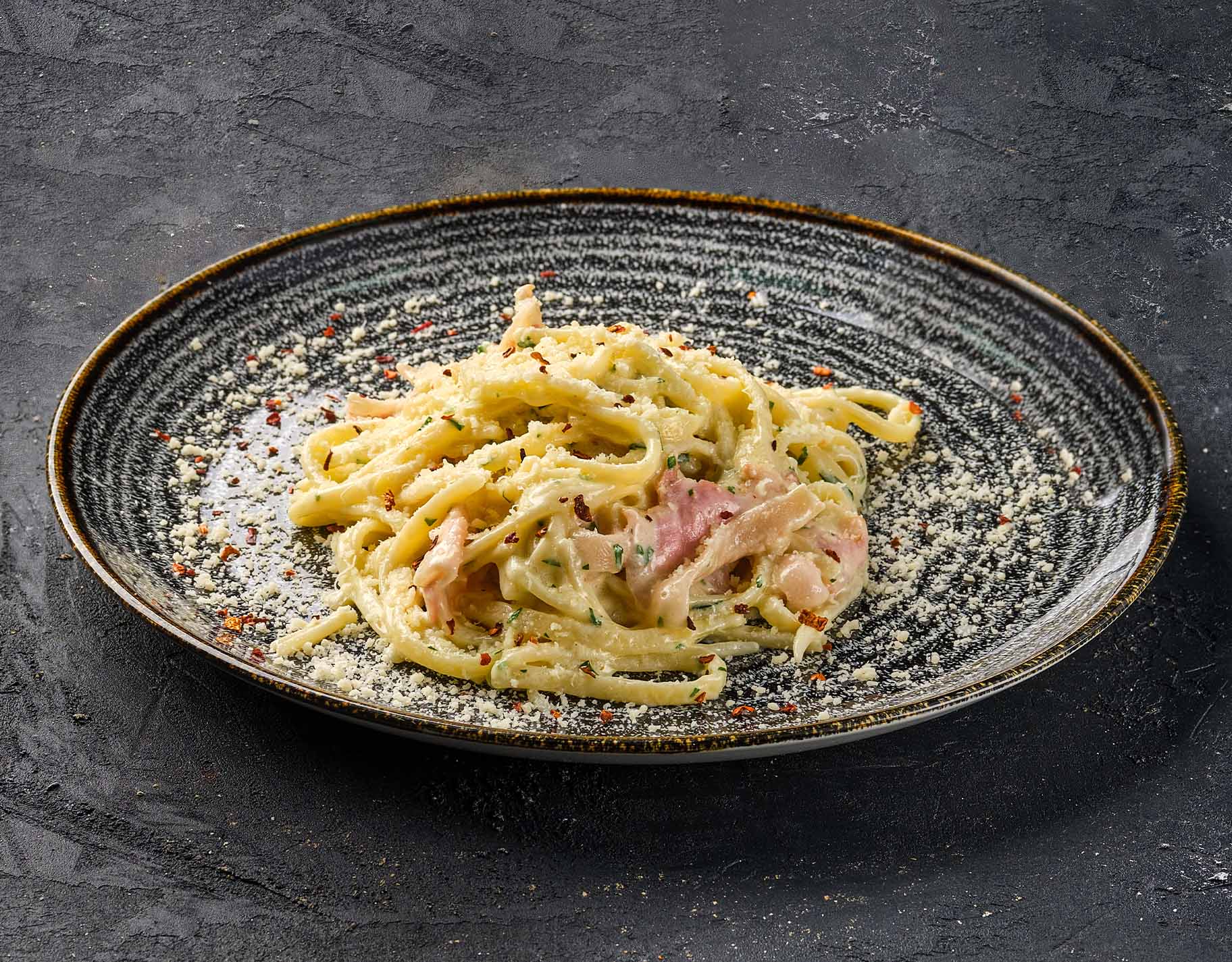
2. Quickmelt Carbonara (Filipino-Italian)
Carbonara is a kid’s favorite everywhere and usually, the Filipino rendition uses cream. But not this particular fusion dish! Although the principle is still the same (wherein it’s egg and cheese), the kind of cheese and meat is what differs. It’s a cheaper alternative, saving us a trip to the gourmet deli store to source guanciale and pecorino romano.
Ingredients
- 250 grams of spaghetti
- 10 strips of bacon, cut into small pieces
- 2-3 eggs (depends on the size)
- 1/2 cup of grated quickmelt cheese
- 1/2 cup of grated parmesan cheese
- 1 tsp of black peppermill grind
- 1/4 tsp of salt
- 1 medium sized white onion, minced
Steps
- Cook the noodles until al dente. But don’t throw the water!
- Separate the yolks from the whites and mix the egg yolks with the queso de bola, parmesan cheese, salt, and black pepper.
- Melt the fat from the bacon until the meet turns pinkish-red. Then, add the chopped white onions and sauté until translucent.
- Then, toss the noodles into the bacon.
- Turn off the flame and add the egg-cheese mixture and start mixing it slowly.
- Add a spoon of the hot pasta water to thicken the sauce.
- Continue mixing until everything is dissolved!
Tips
- The trick to making good Carbonara is heat control — when making it, let the leftover heat from the pan melt the cheese. Otherwise, the eggs will scramble.
- For the noodles, don’t leave it boiling in a pot. The moment the water starts boiling hard and fast, turn off the heat and let the noodles soak up the water. It also prevents the noodles from getting mushy.
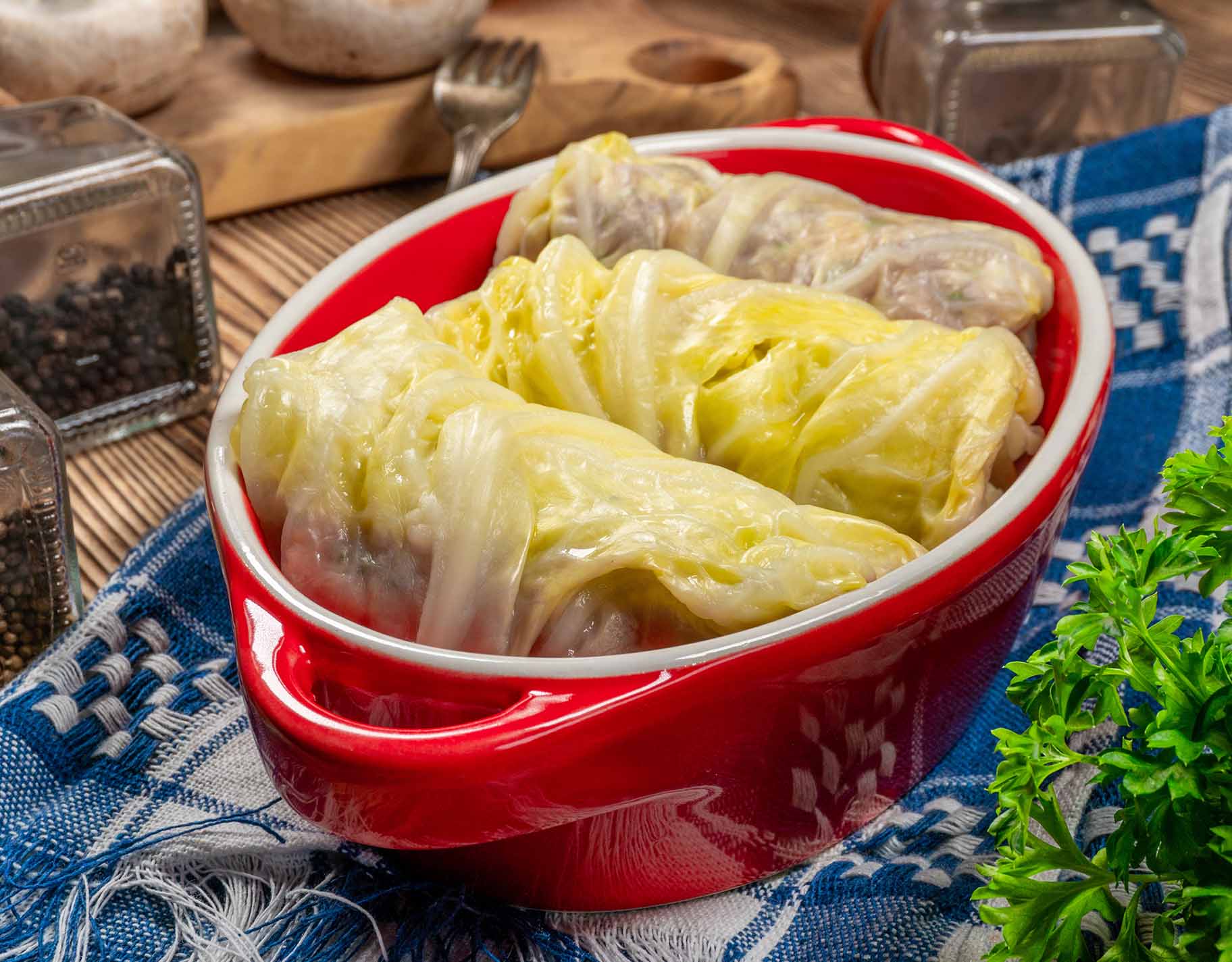
3. The Empress Roll (or Veggie Siomai) (Chinese-Romanian)
Marrying the concept of the Romanian cabbage roll with the Chinese timeless favorite siomai, it swaps out the starchy wrapper with a leaf of pechay wombok or Chinese Cabbage or a typical cabbage. Some restaurants like Dimsum Break and Ding Qua Qua in Cebu still serve it. What some of the Cebuanos do is that they eat it with the restaurant’s signature Steamed Rice — which many of those from Metro Manila will understand as Fookien Rice.
Ingredients
- 1/2 kg of ground pork
- 1/4 cup of dried hibe
- 1/4 cup of shitake mushrooms, chopped
- 1 medium carrot, grated
- 1/4 cup of malunggay leaves
- 1 whole head garlic, minced
- 1/4 cup of white leek, minced
- 1 whole pechay wombok
- 1/3 cup of soy sauce or oyster sauce
- 1 tsbp of sesame oil
- 1 tsp of ginger, minced
Steps
- Mix the pork, hibe, shitake mushrooms, carrot, malunggay, garlic, ginger, white leek, soy sauce, and sesame oil all in one bowl.
- Once mixed, cut the base of the pechay and blanch the leaves for 10 seconds or soft enough to wrap.
- Wrap the meat mixture and then steam in a rice cooker.
Tips
- To prevent the Empress Roll from falling apart, wrap it with the leek’s greens.
- If there’s no leek, spring onion is good too!
- Some people like putting turnip (or singkamas) in the mixture but chayote (or sayote) is a good alternative too!
- Avoid putting starchy and mushy vegetables like squash. They tend to make the roll break apart.
- Another possible creation is adding quail eggs inside for extra protein.
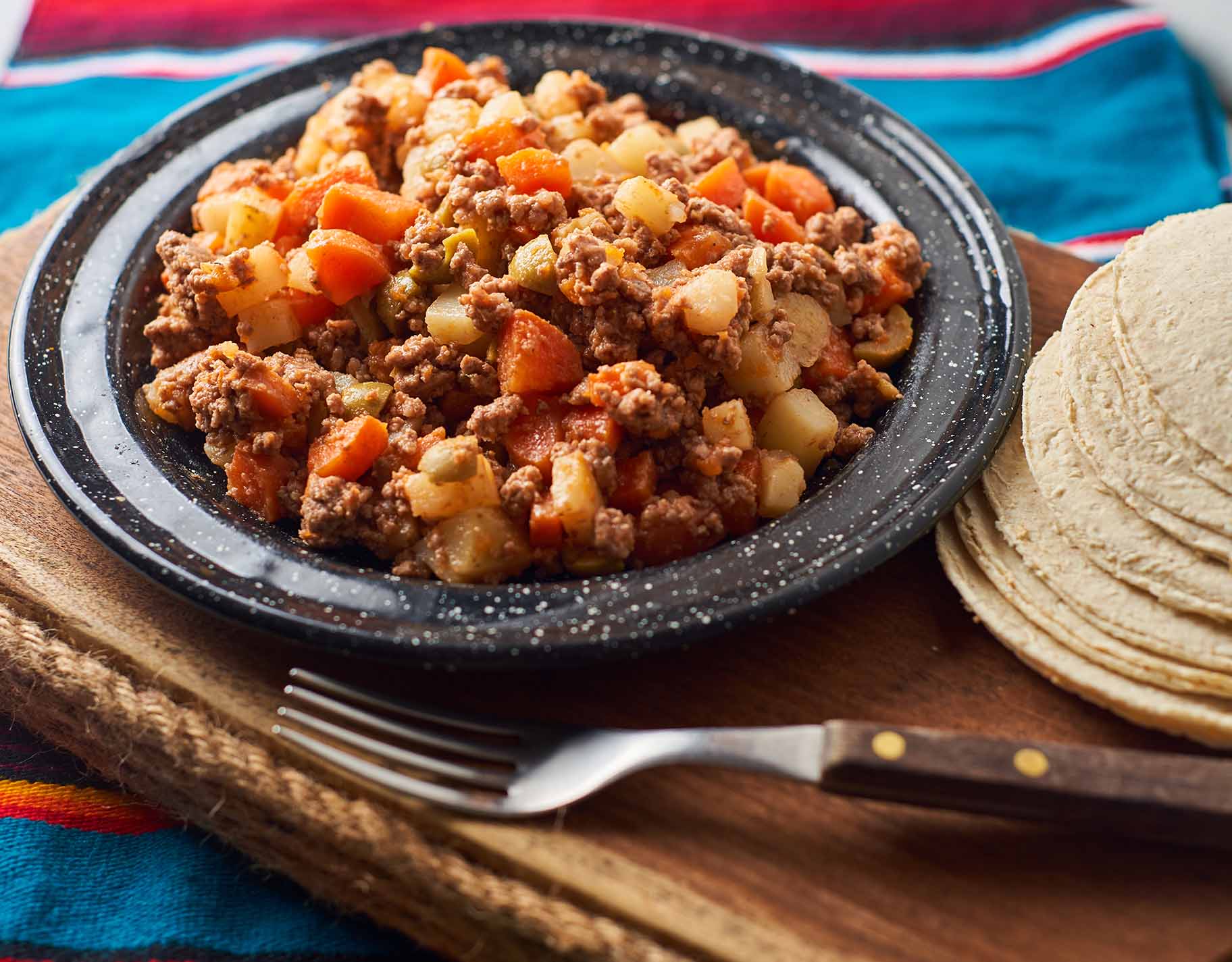
4. Picadillo (Mexican, Spanish, Filipino)
Picadillo has its origins in Mexico and Latin Americas, usually being a ground beef mix with peas, raisins, olives, tomatoes, and other veggies they can find. However, in the Philippines, we’ve adapted it in two ways: Arroz ala Cubana (the one we served with a fried banana) and Picadillo soup which can stand by itself as a meal.
Ingredients
- 250g of ground beef
- 1 sayote
- 1/2 bulb of garlic minced
- 1 red onion (small)
- 1 potato
- 1 medium-sized carrot
- 1 tsp of ginger
- A pinch of black peppercorn
- 1 tsp of soy sauce
- 2 dashes of black pepper
- 1 dash of salt
- 1 branch of malunggay leaves
- 1 tomato (quartered)
Steps
- Skin the potato, sayote and carrot. Cube them up for faster cooking.
- Mix the soy sauce with the ground beef. Once done, then toss them into pot in this order:
- Beef/Pork/Chicken
- Tomato
- Potato, Carrot, Sayote
- Onion
- Garlic
- Ginger
- Malunggay
- Once the beef turns brown and the tomatoes are a tad mushy, pour water into the pot. Then, let simmer for 10 minutes.
There are actually a lot of family-friendly fusion dishes!
Of course there will always be the few who would like to be more “traditional” in their approach. But rejecting those fusion dishes are no way to go around it either. Usually, these family-friendly fusion dishes are a result of innovation which was born from necessity. Not all countries share the same ingredients! Besides, exposing our kids to various flavors also makes them less prone to being picky eaters!
More about food?
Eric Dee: The Heart of a Foodee
Date-Worthy Restaurants for Mother’s Day: Makati & BGC Edition
10 Family-Friendly Restaurants in Tomas Morato
